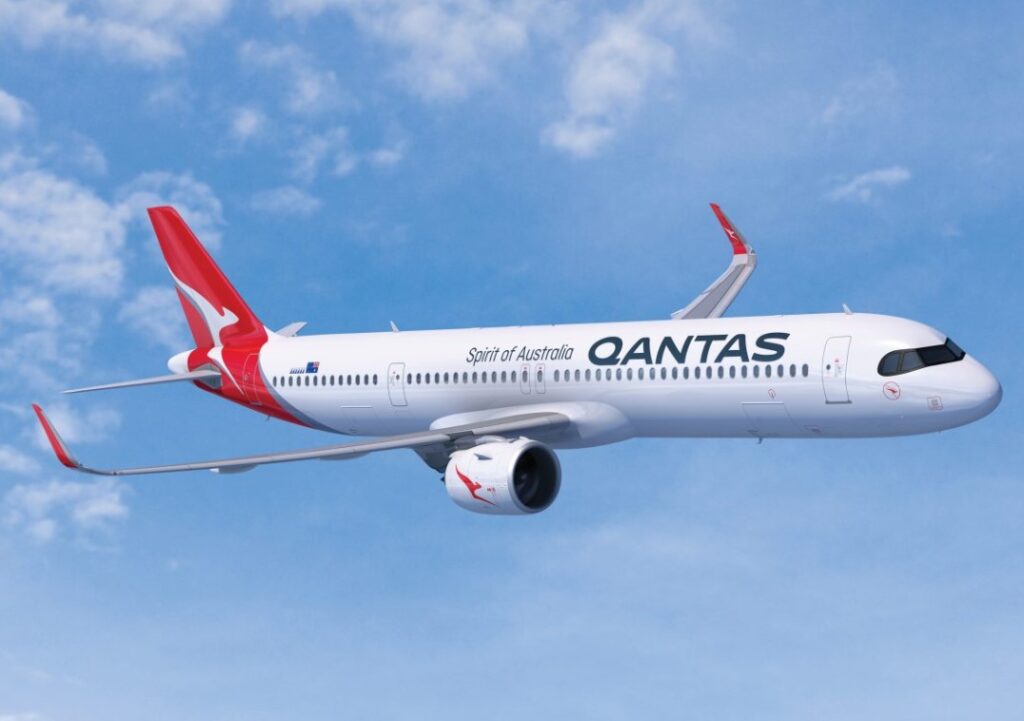Qantas Airways, Australia’s flag carrier, has announced a major order of 24 new widebody aircraft from Airbus and Boeing to replace its ageing A330s and A380s. The order, worth billions of dollars, is part of the airline’s fleet renewal program that aims to enhance its international network and customer experience.
Qantas Reports Record Profit amid Travel Boom
The announcement came as Qantas reported a record underlying profit of AU$2.47 billion ($1.63 billion) for the financial year 2023, compared to a loss a year earlier. The airline attributed the strong performance to the recovery of domestic and international travel demand after the COVID-19 pandemic, as well as its cost-cutting and transformation initiatives.

Qantas Group CEO Alan Joyce said the profit was a testament to the resilience and adaptability of the Qantas team, who had navigated through the most challenging period in the airline’s history.
“We’re proud of what we’ve achieved in the past year, but we’re not resting on our laurels. We’re investing in our future with new aircraft that will enable us to grow our network, improve our customer experience, and create more opportunities for our people,” Joyce said.
Qantas Orders 12 Airbus A350s and 12 Boeing 787s
The new aircraft order is split between 12 Airbus A350s and 12 Boeing 787s, which will arrive from FY27 (July 2026-June 2027) into the next decade. The order also includes additional purchase rights options split evenly between both manufacturers, giving Qantas flexibility for future growth and fleet replacement.
The new jets will progressively replace the existing 28 Airbus A330s, which are used on a mix of international and domestic routes, mainly to Asia and the United States. The A350s and 787s have longer range capabilities, which mean they can operate throughout the current international network and also open up new routes in the future.
Joyce said the order was a generational decision for the company, as it would shape the Qantas fleet for the next 20 years or more.
“These are fantastic aircraft that offer the best combination of performance, efficiency, comfort, and reliability. They will help us reduce our carbon footprint, lower our operating costs, and enhance our competitive edge in the global market,” he said.
Airbus A350 vs Boeing 787: Which One Is Better?
The Airbus A350 and Boeing 787 are both modern widebody aircraft that feature advanced technology, aerodynamic design, composite materials, and fuel-efficient engines. They are designed to offer superior passenger comfort, with features such as larger windows, higher cabin pressure, lower noise levels, and more spacious seats.
However, there are also some differences between the two models that may influence Qantas’ decision on how to deploy them across its network. Here are some of the main comparisons:
- Size: The Airbus A350 has a larger capacity than the Boeing 787, with up to 440 seats in a single-class configuration, compared to up to 381 seats for the Boeing 787. However, Qantas is likely to configure its A350s and 787s with fewer seats and more premium cabins, depending on the route and demand.
- Range: The Boeing 787 has a slightly longer range than the Airbus A350, with up to 15,750 km (8,500 nautical miles), compared to up to 15,000 km (8,100 nautical miles) for the Airbus A350. This means that the Boeing 787 can fly further without refueling, which may give it an edge for ultra-long-haul flights such as Project Sunrise.
- Performance: The Airbus A350 has a higher cruising speed than the Boeing 787, with up to Mach 0.89 (1,095 km/h), compared to up to Mach 0.85 (1,046 km/h) for the Boeing 787. This means that the Airbus A350 can fly faster and save time on long-haul flights.
- Cost: The Airbus A350 has a higher list price than the Boeing 787, with up to $366 million for the A350-900 variant, compared to up to $292 million for the 787-9 variant. However, airlines usually negotiate discounts with manufacturers based on various factors such as order size, delivery schedule, and financing options.
Qantas Plans to Replace A380s with A350s from FY32 Onwards
The new aircraft order will also give Qantas the option to ultimately replace its fleet of ten Airbus A380s with A350s from around FY32 onwards. The A380s are currently grounded due to the low demand for international travel, and Qantas has said it does not expect to resume flying them until at least 2025.
The A380s are the largest and most iconic aircraft in the Qantas fleet, with up to 484 seats in four classes, including first class suites, business class skybeds, premium economy seats, and economy seats. They are mainly used on high-density routes to London, Los Angeles, Singapore, and Dubai.
However, the A380s are also the most expensive and least efficient aircraft in the Qantas fleet, with high fuel consumption, maintenance costs, and environmental impact. They are also less flexible and adaptable than the smaller and newer A350s and 787s, which can operate on a wider range of routes and markets.
Joyce said the A380s had served Qantas well for over a decade, but they were no longer the best fit for the airline’s future strategy.
“The A380s are great aircraft, but they are also very large and very costly to operate. They are not suited for the post-pandemic world, where we need more agility and efficiency to respond to changing market conditions and customer preferences,” he said.
“We believe the A350s will be a better option for us in the long term, as they offer similar passenger comfort and amenities, but with lower operating costs, lower emissions, and more flexibility.”
